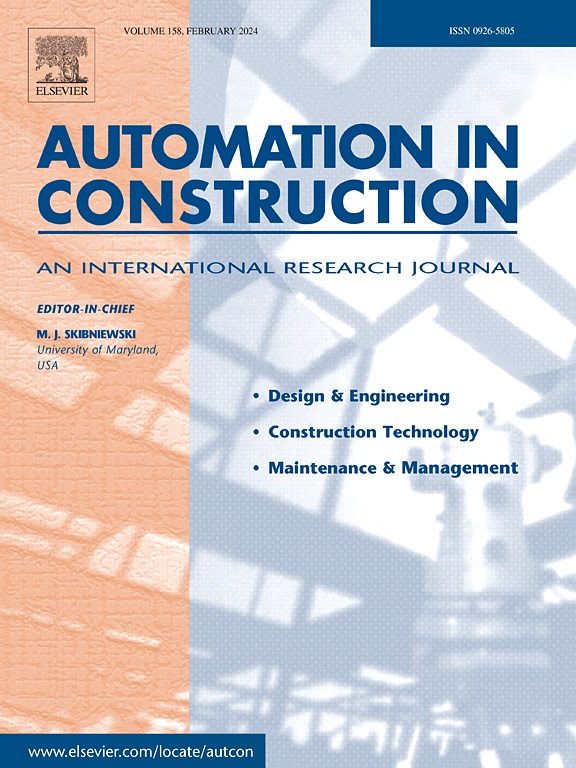Enhancing excavation performance and situational awareness in construction teleoperation using electro-tactile feedback
IF 11.5
1区 工程技术
Q1 CONSTRUCTION & BUILDING TECHNOLOGY
引用次数: 0
Abstract
Construction teleoperators, who perform hazardous tasks remotely, often experience limited situational awareness and cognitive overload due to overreliance on visual displays. These challenges are exacerbated in high-pressure situations, increasing the risk of fatal accidents and degrading task performance, especially for novice operators. In this paper, an electro-tactile feedback interface was introduced to address these issues, and its impact on task performance (e.g., collision, productivity) and cognitive performance (e.g., workload, situational awareness) are investigated across different levels of operational difficulty. A virtual environment simulating real-world excavation constraints was used to assess its effectiveness and usability with sixty-two participants. The results indicate that electro-tactile feedback not only reduces workload and enhances risk perception of remote hazards, but also improves control performance in excavation tasks, particularly under cognitively demanding conditions. These findings support the integration of electro-tactile feedback into construction teleoperation interfaces, contributing to safer and more efficient remote operations in challenging environments.
利用电触觉反馈提高施工遥操作的挖掘性能和态势感知
由于过度依赖视觉显示,远程执行危险任务的施工远程操作员经常经历有限的态势感知和认知过载。这些挑战在高压环境下更加严重,增加了致命事故的风险,降低了任务性能,特别是对于新手操作人员而言。本文引入了一种电触觉反馈接口来解决这些问题,并在不同的操作难度水平上研究了它对任务性能(如碰撞、生产力)和认知性能(如工作量、态势感知)的影响。利用模拟真实世界挖掘约束的虚拟环境对其有效性和可用性进行了评估,共有62名参与者。结果表明,电触觉反馈不仅可以减少工作量,增强对远程危险的风险感知,而且可以提高挖掘任务中的控制性能,特别是在认知要求较高的条件下。这些发现支持将电触觉反馈集成到建筑远程操作界面中,有助于在具有挑战性的环境中实现更安全、更高效的远程操作。
本文章由计算机程序翻译,如有差异,请以英文原文为准。
求助全文
约1分钟内获得全文
求助全文
来源期刊

Automation in Construction
工程技术-工程:土木
CiteScore
19.20
自引率
16.50%
发文量
563
审稿时长
8.5 months
期刊介绍:
Automation in Construction is an international journal that focuses on publishing original research papers related to the use of Information Technologies in various aspects of the construction industry. The journal covers topics such as design, engineering, construction technologies, and the maintenance and management of constructed facilities.
The scope of Automation in Construction is extensive and covers all stages of the construction life cycle. This includes initial planning and design, construction of the facility, operation and maintenance, as well as the eventual dismantling and recycling of buildings and engineering structures.
 求助内容:
求助内容: 应助结果提醒方式:
应助结果提醒方式:


